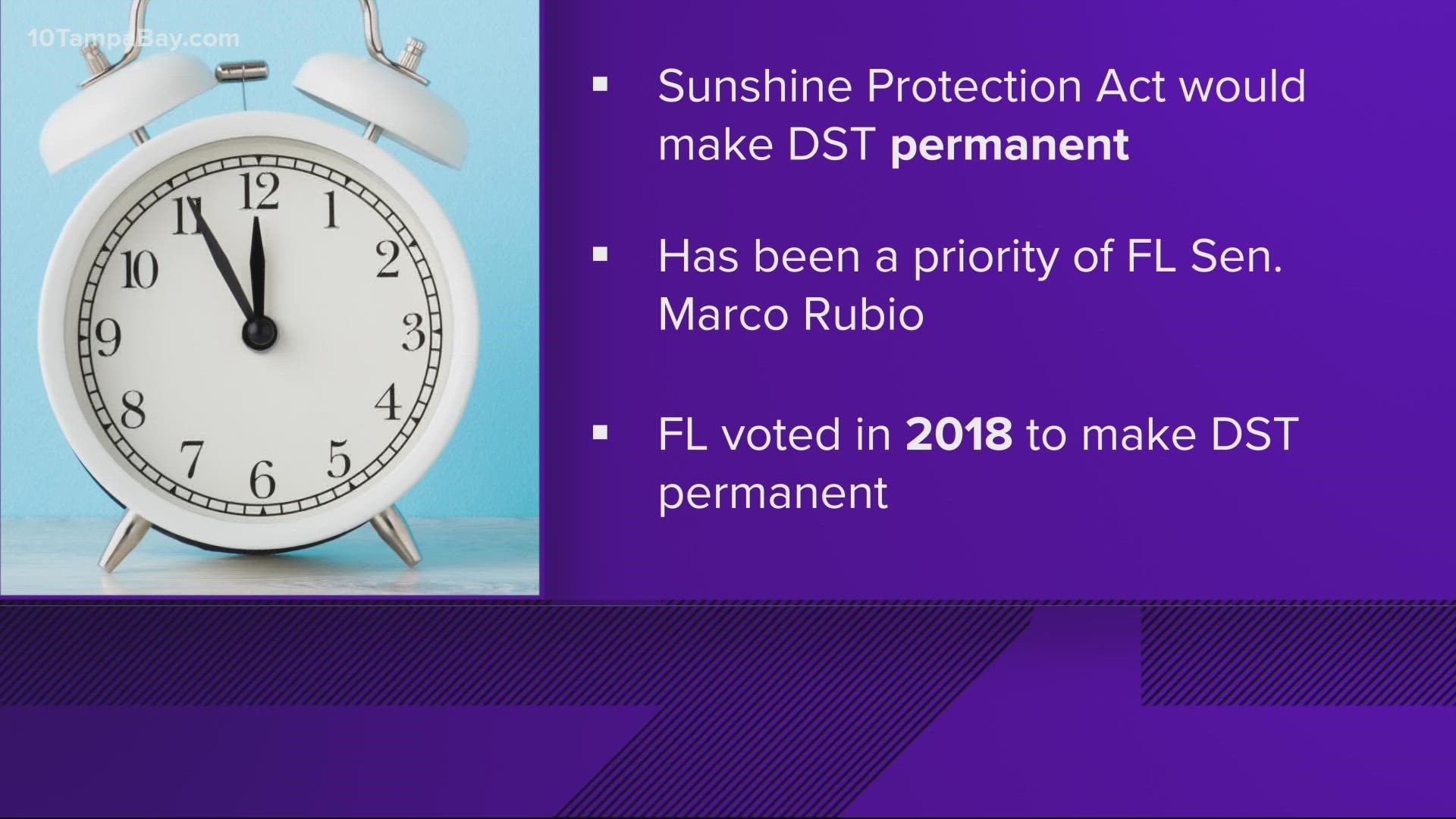ST. PETERSBURG, Fla. — Daylight saving time, like clockwork, is once again upon us. People across much of the United States, including here in Florida, will set their clocks to "spring forward" one hour on March 10.
Like last year, we'll lose an hour of sleep. And probably in the days leading up to and thereafter, people will again ask if and when permanent daylight saving time ever will become a thing.
Florida Republican Sen. Marco Rubio has spearheaded efforts in recent years in Washington, D.C., to "lock the clock." Once in daylight saving time, there would be no more "springing forward" and "falling back."
Then-Florida Gov. Rick Scott signed the Sunshine Protection Act into law at the state level, but it's always been up to Congress to make changes in how the nation tells time.
But despite multiple efforts, Rubio's Sunshine Protection Act has never been signed into law. According to TEGNA reports, the most progress this bill has seen was in March 2022 when it unanimously passed the U.S. Senate. A matching House bill was introduced but died awaiting review in the House.
In 2023, the bill was introduced once again but failed to pass in its respective chambers.
"Just this past weekend, we all went through that biannual ritual of changing the clock back and forth, and the disruption that comes with it," Rubio said in an earlier statement. "And one has to ask themselves after a while, 'Why do we keep doing it? Why are we doing this?'"
One of the major benefits of year-round daylight saving time, Rubio said, includes more sunshine at a later hour.
What does permanent daylight saving time look like in Florida?
In the Tampa Bay region, you can expect roughly 115 days with sunrise before 7 a.m. on year-round daylight saving time compared to about 145 days now, according to this visualization by Andy Woodruff. South Florida, because it is farther east, would experience more days with a 7 a.m. sunrise than communities on the Gulf Coast.
But for those who enjoy more light at night, this is why you'd want permanent daylight saving time: Tampa currently has about 292 days with a sunset after 6 p.m., according to the visualization mentioned above. That increases to roughly 365 days — all year round — with daylight saving time always in effect.
Let's get this out of the way: The western Florida panhandle is in the Central time zone. People there would have a sunset after 6 p.m. about 290 days out of the year with permanent daylight saving time, depending on the exact location, or about 60 days more.
Rubio's office says studies have shown permanent DST could come with benefits, including:
Improving road safety
- Reducing car crashes by better aligning daylight hours with standard work hours
Improving the economy
- A JPMorgan Chase study apparently found a drop in financial activity when the clocks moved back.
Benefitting people's health
- Permanent DST is reportedly associated with a reduced risk of depression, cardiac issues and more physical fitness, which could reduce obesity.
Helping the environment - a little?
- Research has shown minimal, but trackable, energy use reductions may be associated with permanent DST. As our VERIFY team found, the electrical savings aren't much.

